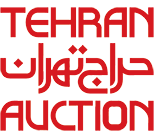The work of Mohammad Ghaffari, known as Kamal-ol-Molk, a pioneer of Iranian naturalist painting, marks the beginning of a new chapter in Iranian art.
Since the start of the last century and with the advent of Kamal-ol-Molk’s modernist experiments, the symbolic and mythological approach in painting has been replaced by a modern approach as a representation of nature and the objective world. The latter has become an undeniable reality of Iranian art ever since. Thus representational – naturalist or realist – painting captured the arena of Iranian visual arts in a way that the concept of painting, in a general sense, amounted to re-creation of the real world the way photography did, while the purpose of Iranian traditional painting has been to create imaginary pictures and a mythical world. Kamal-ol-Molk’s great legacy was a harbinger for a new era in Western style painting.
Portrait painting, as a fascinating subject in Iranian art, emerged during the Safavid period. Subsequently, it changed the traditional media of paper and watercolor to canvas and oil during the Qajar period. Early portrait paintings presented an ideal view of a painter of an image or a mythological figure so that many of them bore little resemblance to reality, serving as a purely imaginary icon. Toward the middle of the Qajar rule and with the introduction of Western paintings that were mainly brought to Iran by Iranian rulers or presented by Western ambassadors to Iran, production of fabric with portrait designs, invention of the printing machine, visits of the Qajar kings to Europe, and the introduction of photography in Iran, portrait painting (as the work on display) imitated Western painting to approach Realism.
The astonishment of Nasereddin Shah and Mozafareddin Shah at the realist paintings and sculptures that they saw in European museums led to their support of representational painting, especially portrait painting, later on. This, in turn, led to fundamental changes in indigenous aesthetics in general. Such developments in the visual culture effected the appearance of portrait painting of rulers, courtiers, and Qajar statesmen in the work of Kamal-ol-Molk and other naturalist painters of the Qajar and Pahlavi periods time and again.
Portrait painting holds a special place in the diverse works of Kamal-ol-Molk. The presence of several works of Kamal-ol-Molk in major auctions around the world, not least two outstanding portraits of Nasereddin Shah and Mozafareddin Shah, at the Christie’s auction in London back in 1994 and 2010, indicate the exclusive attention of the international market to such works of Kamal-ol-Molk. In the same way, the sale of a portrait of Doost Mohammad Khan Moayer-ol-Mamalek at the Tehran Auction for IRR 5b indicates the significance of such works of the artist. Portrait paintings of Nasereddin Shah, Mozafareddin Shah, Vosough-o-Doleh, Mirza Mohammad Hossein Adib, Sani-o-Doleh, Azed-ol-Molk (Deputy to Ahmad Shah), Sirdar Asa’d Bakhtiyari, Mohammad Ali Foroughi, and many others highlights Kamal-ol-Molk’s skill in portrait painting. We must not overlook the political and economic considerations that ruled art commissioning at the time. When Kamal-ol-Molk traveled to Europe to study art for a few years, we see portraits he painted of Fantin-Latour (French painter), Rembrandt, or his porter.
In this painting, Kamal-ol-Molk has painted the portrait of Abolhassan Khan Ardalan, known as Fakhr-ol-Molk, a minister of the Qajar period. Abolhassan Khan Ardalan and Nasereddin Shah traveled to Europe together in 1888. He was given the title Fakhr-ol-Molk on their return from Europe the following year. He gained considerable influence and held important offices in the Mozafareddin Shah Court. Fakhr-ol-Molk Ardalan has a dignified photographic expression in this painting which bears the signature of “Mohammad” on the left corner.
The title Court Painter was bestowed on Kamal-ol-Molk in 1833 and he became the Shah’s tutor. The number of paintings of this period that are signed as the “Court Painter” amount to 170 works. The Shah conferred the titled of Kamal-ol-Molk upon him in 1855. The painting in the Hall of Mirrors is the first he signed as Kamal-ol-Molk.
Harmony of colors and drawing in the work clearly indicate his stylistic qualities as well as his skill. This painting is a unique example of portraiture as a genre in Kamal-ol-Molk work and, in general, in the realist painting of the Qajar court.




